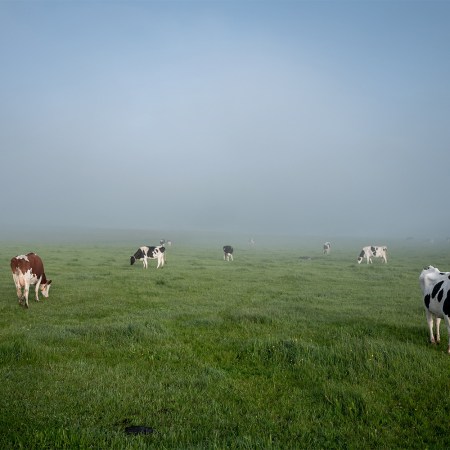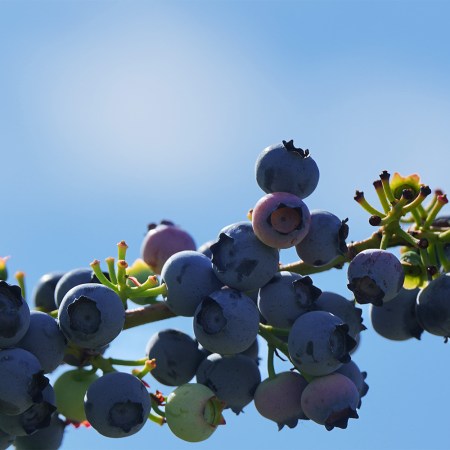Although I was a vegetarian for seven formative years, from age 17 to 24, I knew more about Taco Bell’s vegetarian menu than I did about macronutrients. When I decided to try meat again, I reverted to my childhood meal of choice, a salami sandwich with yellow mustard. Sure, I had an immediate stomachache, but I also had something I rarely felt, even after five cups of coffee: energy.
Today, my relationship with meat would best be described as a “flexitarian” diet, but I admittedly cringe at the term. Saying it makes me feel like the kind of guy who would pose with their muscles while giving someone directions. Coined by the dietitian Dawn Jackson Blatner, a flexitarian is someone who has a primarily plant-based diet but eats meat or fish about three times a week. Similar to the Planetary Health Diet, flexitarianism allows for more variety.
More Meat, More Energy?
Outside of the wiggle room that the name implies, a flexitarian diet instantly made me feel less fatigued. Registered dietitian Courtney Pelitera tells me that this isn’t uncommon. That’s not because plant-based diets are less healthy, but because it can often take more work as a vegetarian to have a balanced diet.
Adequate nutrition takes more planning with plant-based diets because fish, meat, dairy and eggs are all complete proteins, whereas plant-based proteins are typically not. As Pelitera notes, the former “contain all nine essential amino acids that are needed to complete the human diet.”
There are a few plant-based options with complete proteins like quinoa, soybeans, buckwheat, hemp seeds and blue-green algae, but most vegetarian protein sources are incomplete or lacking in one or more amino acids. With a vegetarian diet, “it’s best to combine different plant-based sources during meals and throughout the day,” like beans and rice or peanut butter and whole grain bread, Pelitera suggests. “The amino acids in the different protein sources of these foods complement each other, creating a complete and balanced protein food.”
Plant-Based Diets Are Tricky, Especially for Athletes
Putting peanut butter on bread may not seem like the most complicated course of action. However, for athletes or anyone with an intense and regular workout regimen like CrossFit or distance running, housing a chicken breast after a workout three days a week is generally a more efficient option. At least, that has been true for Pelitera’s experience working with athletes at Top Nutrition Coaching. “An exclusively plant-based diet will take a lot more food and a lot more pre-planning and pre-packing meals to fill very high energy needs for exercise, energy and recovery.”
I was never willing to do that much work — beyond finding new ways to melt cheese on various carbs — when I was a vegetarian. And I wasn’t an athlete so much as I was borderline anemic. But even when I ate spinach and took iron supplements, I continued to struggle with fatigue. I didn’t realize that plant-based proteins like nuts and legumes often contain phytates, or phytic acid, which have been found to have positive antioxidant effects. Fiber also aids in digestion and is essential for healthy blood sugar. The downside is that both of these things can block certain nutrients, like iron, from being absorbed into the body.
“Fiber and antinutrients like phytates from legumes and grains can also interfere with the absorption of key minerals like magnesium and zinc, which are vital for energy production and recovery,” explains Jamie Maitland, a fitness instructor and certified holistic nutritionist.
Best Practices for Reintroducing Meat
Maitland, also the author of the 21-Day Reset Cookbook, has assisted many clients looking for more bioavailable (that is, highly absorbable) sources of nutrients like amino acids, vitamin B-12 and iron. She recommends starting with eggs, bone broth, wild-caught fish and pasture-raised poultry, all of which include nutrient-rich sources of protein that are easy to digest.
For individuals who’ve been vegetarian or vegan for a long time, Pelitera suggests incorporating eggs and yogurt first, and then slowly working up to animal-based proteins in a few weeks. “Your body needs to readjust to a diet change, so slow is always better,” Pelitera says, warning “don’t go for the burger right away.”
People who are new to eating meat need to cue their body to start producing digestive enzymes such as lactase, in order “to help break down these complete protein molecules which have not been needed for a period of time,” she adds, thus confirming what I already knew on some level: a salami sandwich was not the best choice.
Eating Meat Again Is an Emotional Decision
Beyond the risk of some physical adjustments upon reintroducing meat, it’s worth noting that some former vegetarians are going to find the transition to be emotional as well. Those who gave up meat for ethical reasons may struggle with this, even when meat products are researched and bought locally from a farmers market.
“While I know that mentally, I did nothing wrong, and in fact, went above and beyond the ‘norm’ for this kind of thing, I still feel guilt,” one former vegetarian posted on Reddit. Others who’ve made the leap to sometimes eating meat report being shamed out of their former communities.
Call It “Qualitarian”
At the same time, after adhering to a plant-based diet for so long, eating meat can be reframed as something that is not only nutritious but “socially liberating,” Maitland notes. “Imagine going to a dinner party or social event and being able to enjoy more options without worrying about restrictions.”
If you’re uncomfortable with the weird flex of calling yourself a “flexitarian,” Maitland offers another alternative: be a “qualitarian.” That means “prioritizing grass-fed, pasture-raised, wild-caught and organic sources — which ensures you’re consuming foods that benefit your body without compromising your health or values.”
In other words, you don’t have to give up your high horse if you start eating meat in a sustainable way. But you might have a little more energy to climb up there.
The Charge will help you move better, think clearer and stay in the game longer. Subscribe to our wellness newsletter today.




















